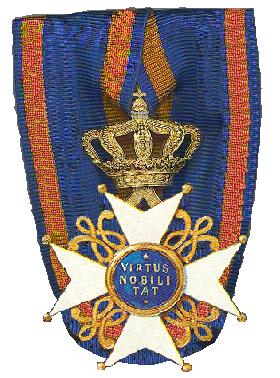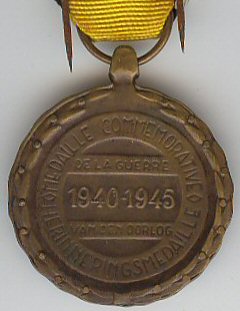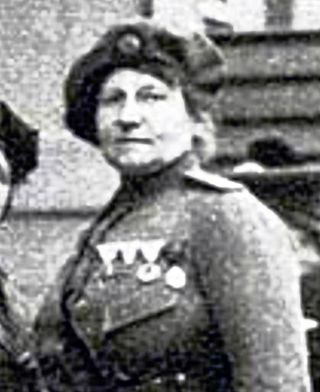
Máxima is Queen of the Netherlands as the wife of King Willem-Alexander.

Wilhelmina was Queen of the Netherlands from 1890 until her abdication in 1948. She reigned for nearly 58 years, longer than any other Dutch monarch. Her reign saw World War I, the Dutch economic crisis of 1933 and World War II.

Princess Margriet of the Netherlands is the third daughter of Queen Juliana and Prince Bernhard. As an aunt of the reigning monarch, King Willem-Alexander, she is a member of the Dutch Royal House and currently eighth and last in the line of succession to the throne.

Pieter van Vollenhoven Jr. is the husband of Princess Margriet of the Netherlands and a member, by marriage, of the Dutch royal house.

Emma of Waldeck and Pyrmont was Queen of the Netherlands and Grand Duchess of Luxembourg as the wife of King-Grand Duke William III. An immensely popular member of the Dutch Royal Family, Queen Emma served as regent for her daughter, Queen Wilhelmina, during the latter's minority from 1890 until 1898.

Catharina-Amalia, Princess of Orange is the heir apparent to the throne of the Kingdom of the Netherlands, which consists of the constituent countries of Aruba, Curaçao, the Netherlands, and Sint Maarten.

The Military William Order, or often named Military Order of William, is the oldest and highest honour of the Kingdom of the Netherlands. It is named after St. William of Gellone (755–814), the first Prince of Orange. Its motto is Voor Moed, Beleid en Trouw. The chivalric order was established on 30 April 1815 by King William I and was presented for feats of excellent bravery on the battlefield and as a meritorious decoration to senior military officers. Comparable with the French Légion d’Honneur but far less often awarded, it is open to everyone regardless of rank or nobility—not only to Dutch military, but also to foreigners. To date, membership in the Order is extremely rarely awarded, and only for exceptional bravery in battle.

The Order of the Netherlands Lion, also known as the Order of the Lion of the Netherlands is a Dutch order of chivalry founded by King William I of the Netherlands on 29 September 1815.
The Cross for Courage and Fidelity is a military award that was established by Queen Emma of the Netherlands by Royal Decree on 7 March 1898. The cross replaced the old Medal for Courage and Fidelity, which had limited prestige and status according to the Netherlands government. The cross is the second highest award of the Kingdom of the Netherlands, preceded only by the Military William Order. The cross was awarded to natives of the Netherlands East Indies that showed exceptional display of bravery and fidelity.

Prince Bernhard of Lippe-Biesterfeld was a German nobleman who was Prince of the Netherlands from 6 September 1948 to 30 April 1980 as the husband of Queen Juliana. They were the parents of four children, including Beatrix, who was Queen of the Netherlands from 1980 to 2013.

The Commemorative Medal of the 1940–45 War was a military decoration of Belgium. It was established by royal decree of the Prince Regent on 16 February 1945 to recognise Belgian servicemen and women who served during World War II. It was also awarded to members of the Belgian Resistance and members of Belgium's Merchant Navy on the side of the Allies. Later decrees allowed for its award to foreign recipients of the Belgian Croix de Guerre.
The Star for Loyalty and Merit was a civilian award established on 1 January 1894 by Governor-General Carel Herman Aart van der Wijck of the Dutch East Indies. The star replaced the old Medal for Civil Merit, which had limited prestige and status according to the Netherlands government. The star was awarded in gold to "significant and meritorious" natives, and in silver to village chiefs and leaders of the "Eastern foreigner" communities. Dutch (Europeans) were not eligible to receive the star.
Willem Berkhoff was a pastry chef who became the first chairman of the board of directors of the first Dutch Vocational School for Pastry Chefs, established in 1924 in Amsterdam and since 1956 named "De Berkhoff". Berkhoff became well known when he presented a traditional English wedding cake to Queen Wilhelmina (1880–1962) and Prince Henry (1876–1934) on the occasion of their marriage in 1901. Henceforth, the wedding cake became standard issue in Dutch wedding festivities. His "Pâtisserie and Refreshment Room" in the Leidsestraat was a household word in and outside Amsterdam, for over seventyfive years.

The Cross for the Four Day Marches is a Dutch Royal decoration awarded for successful participation in the International Four Days Marches Nijmegen held annually at Nijmegen, The Netherlands. The full title of the decoration is Kruis Voor Betoonde Marsvaardigheid. It is more commonly referred to as the Vierdaagse Cross or Vierdaagsekruis.

The Orderly Medal of the Four Day Marches was awarded between in 1965 and 2016 by the KNBLO, or Royal Dutch League for Physical Education, to those who gave support to walkers participating in the International Four Days Marches held annually at Nijmegen, the Netherlands.

The Royal and Merciful Society of Bearers of Medals and Awards of Belgium was founded in 1865. The headquarters of the Royal Society is located in Heule, Belgium.

Ailke Westerhof was a Dutch nurse who served in the Red Cross during the Balkan Wars and World War I.

Ida Laura Veldhuyzen van Zanten was a Dutch pilot and social worker who was a member of the Dutch resistance during the Second World War and a pilot in the British Air Transport Auxiliary. She was the only woman to receive the Vliegerkruis, the Airman's Cross.

The Decoration for Order and Peace is a military award of the Netherlands. The medal was established on 12 December 1947 by royal decree of Queen Wilhelmina. The medal commemorates at least three months of service in the Dutch East Indies and adjacent waters during the Indonesian National Revolution. It was awarded to members of the Netherlands Armed Forces and the Royal Netherlands East Indies Army. Recipients who were engaged with hostile parties in a military context could be awarded clasps indicating the year of the action.

















